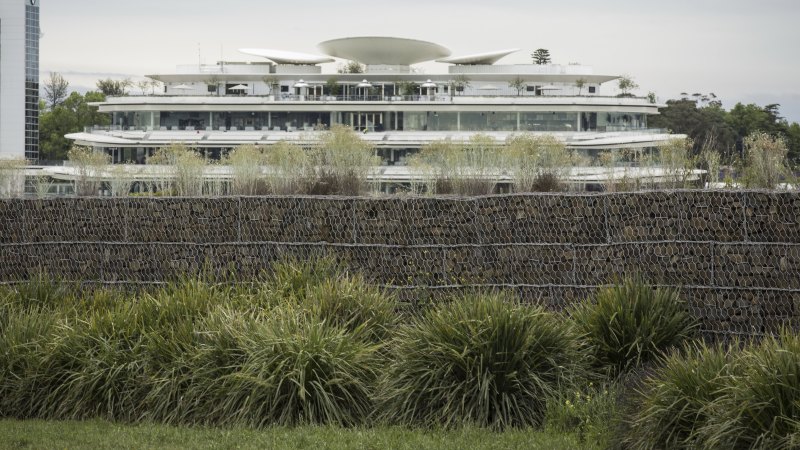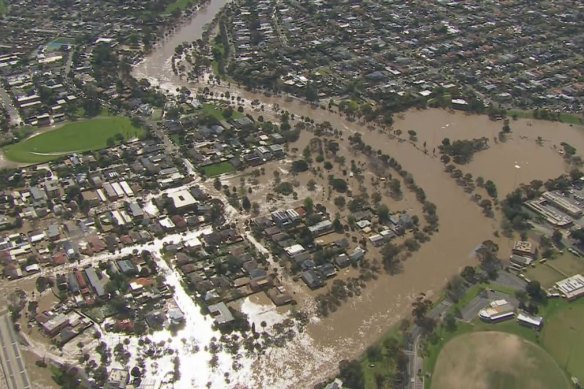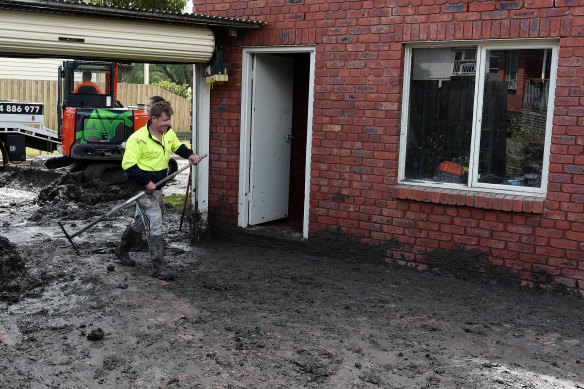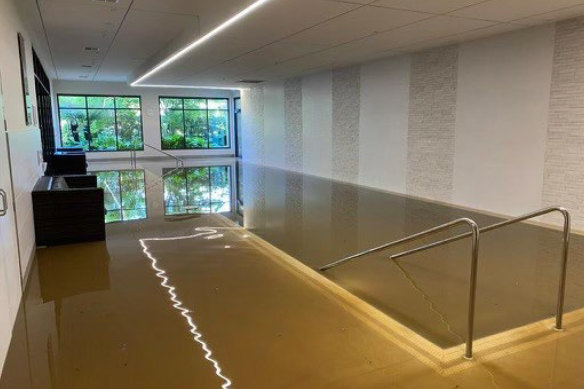Save articles for later
Add articles to your saved list and come back to them any time.
Early in the report into last October’s Maribyrnong River flood, former Supreme and Federal Court judge Tony Pagone makes an arresting admission.
Melbourne Water established a review, which he led, which had “no formal or statutory basis other than as an inquiry established by Melbourne Water to receive a report”.
The floodwaters which swamped Maribyrnong were the worst in the area since 1974.Credit: Nine News
In other words, this wasn’t a report that could be considered truly independent.
The inquiry’s inability to compel participation, or protect witnesses from being sued if they said the wrong thing, meant much of its work was light on detail.
As a result, Pagone said there were “many questions unanswered and many issues not fully explored”.
Maribyrnong resident and fellow lawyer Madeleine Serle put it a bit more bluntly: “This was an egregious waste of time.”
People clean up a flood damaged property near the Maribyrnong River.Credit: Luis Ascui
Opposition water spokesman Tim McCurdy went further again. “Melbourne Water’s review was a complete sham from the beginning.”
The review started terribly with its first chair, Nick Wimbush, quitting after The Age revealed he agreed in 2015 to move flood rules from an area of land that would later become part of Rivervue retirement village.
Rivervue flooded last year. Many elderly residents of the village remain traumatised.
Among his inquiry’s 15 recommendations, Pagone said that Melbourne Water should “investigate how it came to be satisfied with the reduction of the flood levels and finished floor levels at the Rivervue retirement village”.
Rivervue Retirement Village.Credit: Rivervue
The role of the Victorian Racing Club and the 900-metre flood wall it built in 2007 to protect Flemington Racecourse from being swamped by a rising river was also meant to be a key element of the report.
Melbourne, Moonee Valley and Maribyrnong councils all opposed the flood wall, alongside a host of residents of the suburb of Maribyrnong, when it was proposed in 2004. Yet, the Bracks government rammed through the project – without objection from Melbourne Water.
But on this key topic, Pagone made another notable observation.
His inquiry was meant to analyse both whether the Flemington wall exacerbated the flood, and if Melbourne Water did its job in allowing the wall to proceed.
“The material available to us does not enable us to do either,” Pagone wrote. The inquiry could not assess the wall’s impact on the wider flood accurately because work Melbourne Water has commissioned will not be finished until April 2024.
There is some discussion in the report that is useful, particularly around what flood mitigation measures could be implemented – from upstream dams and levees to buyback schemes.
On this, the owners of the 47 Rivervue retirement villas that flooded deserve unique attention. These people clearly lived on a floodplain, even if incompetence by a range of people left them unaware they were at risk.
After the flood subsided, through no fault of their own, they were left with the long-term value of their homes (leased long-term from retirement village operator Tigcorp) being vastly reduced.
On this point, Pagone’s report makes a crucial point: while planning rules can be changed for future developments to ensure they are not on a floodplain, “there is also a need to manage existing risk”.
What this translates to, he writes, is buyback schemes in some instances. The report points out that, at Rivervue, buybacks may be less appropriate than building levee walls to protect the village.
If nothing else comes from this inquiry, perhaps Premier Jacinta Allan and her ministers will consider even unpopular options to address flooding along the Maribyrnong – including buybacks.
Get the day’s breaking news, entertainment ideas and a long read to enjoy. Sign up to receive our Evening Edition newsletter.
Most Viewed in Politics
From our partners
Source: Read Full Article



